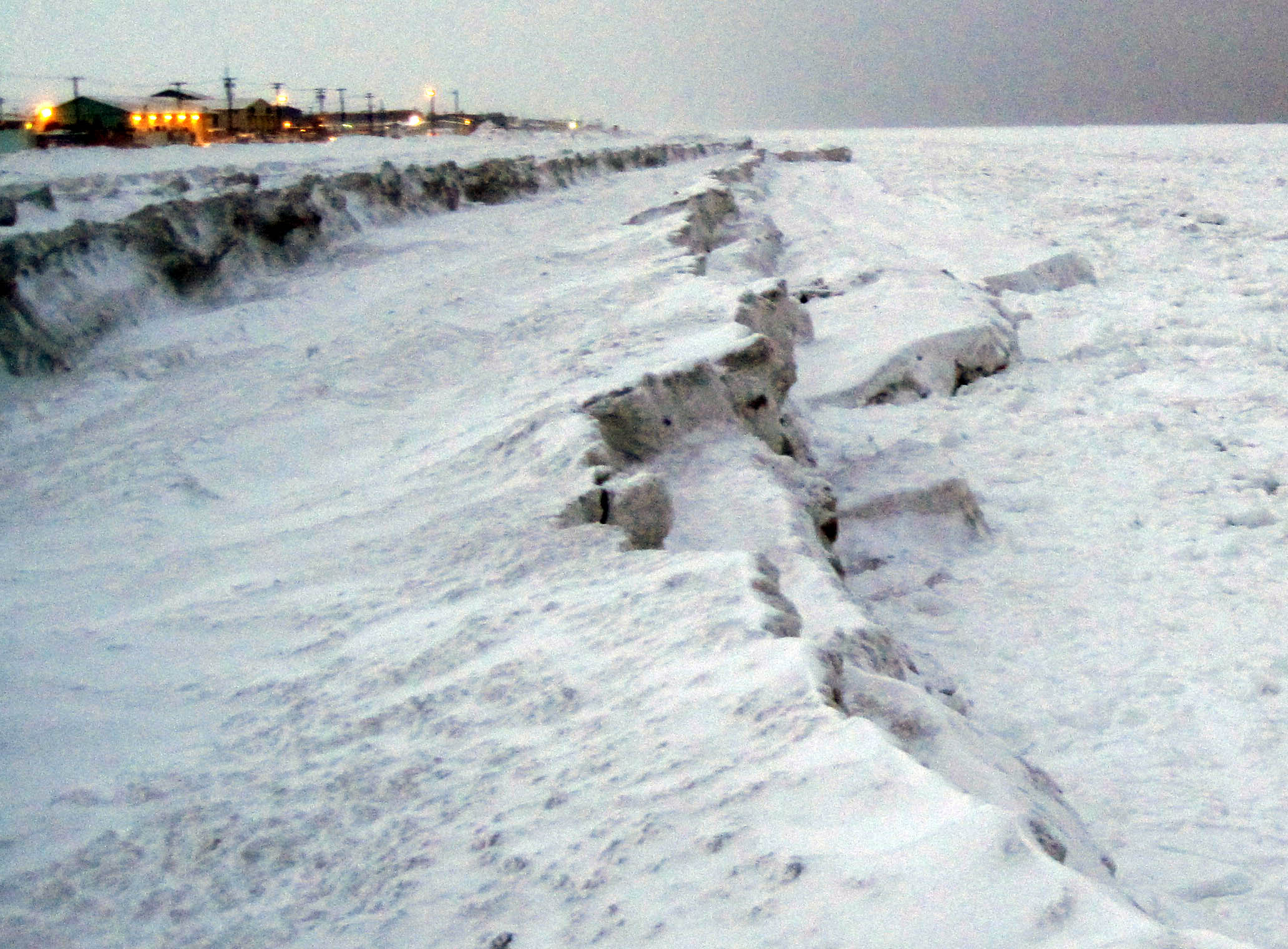Sea ice has been essential to life in coastal Arctic Alaska for thousands of years. Generations of Iñupiat gained knowledge of this dynamic environment. Their survival depended upon knowing when it was safe or how to avoid risk. Sea ice knowledge is highly valued and has been passed down from one generation to the next. But, as the climate in the Arctic has been changing and conditions have become less predictable. If weather patterns once used to predict the stability of shorefast sea ice and the opening and closing of open leads are no longer occurring, the question becomes then how does one behave toward sea ice travel? Do you no longer go out on the ice? Do you still travel but remain observant so as to form your own new predictors based on what you see and learn each time you go out? How do you adapt and build upon traditional knowledge of the past to apply to your new conditions? How is this old knowledge preserved if it is no longer relevant and no longer being passed along in the same way?

We felt it was important that interviews with local subsistence users discussing nearshore sea ice and trying to answer some of these questions about the sea ice environment should be recorded and made broadly available. Not only is it critical knowledge to be preserved for future generations, but observations and understandings of local residents, broadly termed “traditional ecological knowledge” or TEK, also can be helpful for scientists trying to understand the natural world.
The Northern Alaska Sea Ice Project Jukebox was originally conceived in 2011 by Matthew Druckenmiller and Karen Brewster. Matt came to the Oral History Program at the University of Alaska Fairbanks (UAF) looking for a way to make the recordings he made in 2008 and 2009 with whalers in Barrow more accessible. The Oral History Program has long had in its archives the recordings made in 1978 with North Slope elders discussing ice conditions in connection with potential offshore oil development by Ron Metzner and Lew Shapiro of the Geophysical Institute, University of Alaska Fairbanks and had been looking for a way to make them more accessible. It was a natural collaboration to combine these two sets of sea ice recordings, as well as conduct new interviews to continue to document changing and "unusual" ice conditions in Barrow.
The Seasonal Ice Zone Observing Network (SIZONet), based at the Geophysical Institute, University of Alaska Fairbanks and part of the National Science Foundation supported Arctic Observing Network, has provided the framework for geophysical and community-based observations of sea ice in Barrow. This includes the interviews and trail surveys that Matt Druckenmiller and Oliver Dammann have done. The goal of SIZONet is to provide data on long-term variations in ice conditions which requires protocols, data management infrastructure and a supporting framework. Data are available at the SIZONet website (https://eloka-arctic.org/
Original funding for the Sea Ice Project Jukebox was received from the North Pacific Research Board (NPRB) in May 2013. The project was presented to the North Slope Borough's Iñupiat History, Language and Culture Commission (IHLC) in August 2013. Letters of support for the original proposal had been received from IHLC, the North Slope Borough, Department of Wildlife Management, and the Barrow Whaling Captain's Association. New interviews were conducted in Barrow in November 2013 by Karen Brewster, Research Associate, UAF Oral History Program in order to capture the events of the spring 2013 whaling season when a large area of ice broke-off close to shore in front of Barrow. Dyre "Oliver" Dammann, a geophysics graduate student at UAF, also participated in these interviews as a form of training for his own future conversations with whalers during the course of his studies of sea ice thickness and trail mapping.
Additional funding was received from NPRB in July 2015 to conduct more interviews in Barrow to add to the continuity of observational data, and to conduct interviews in Kotzebue, Alaska, to begin building a baseline of information about a place with different near shore ice conditions than around Barrow. Karen Brewster conducted interviews in Barrow in February 2016 with more Iñupiaq whalers about their experiences with sea ice and observations of changing conditions. Interviews were conducted in Kotzebue in March 2016 with older Iñupiaq subsistence hunters about their experiences with the nearshore ice environment and how that has been changing within their lifetimes. In Kotzebue, Karen Brewster was joined by Dr. Andrew Mahoney, Professor of Geophysics at the University of Alaska Fairbanks, and his graduate student, Rebecca Rolph, who are beginning to do sea ice and geophysical scientific studies in the area. In addition to the interviewing, the group was able to travel onto the ice, guided by local expert, Cyrus Harris, to observe ice conditions and collect ice core samples and take water salinity and temperature measurements.
In September 2016, a third phase of funding was received from the Coastal Marine Institute to support a final round of interviewing in Barrow and Kotzebue as well as inclusion of a photo gallery of ice imagery in the Jukebox.
This Northern Alaska Sea Ice Project Jukebox was completed in May 2017 by Karen Brewster. Many thanks go to Muriel Hopson and Ronald H. Brower, Sr. for their expert translation of the archival interviews conducted in Iñupiaq. Ronald Brower also provided assistance with spelling of specific Iñupiaq terms as they came up in English interviews.

